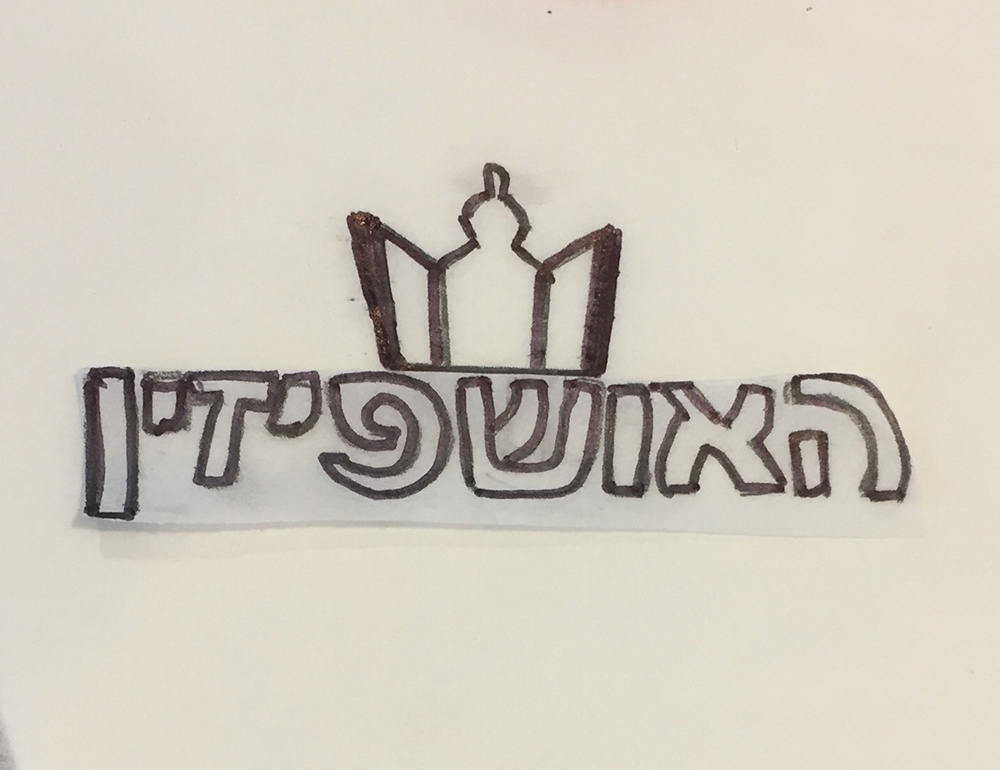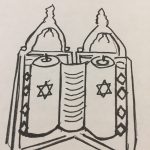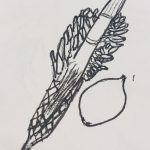By: Marilyn M. Faham
This is an interactive piece to be read by parents and their children. Read about the Sephardic customs of Sukkot with your children. Have them color in pictures/symbols and talk about the Holiday.
Sukkot is a time to rejoice when our families come together in the Sukkah. We are happy to have a clean slate, following Yom Kippur. We are commanded in the Torah to sit in the Sukkah for 7 days so that future generations will know that Bnei Ysrael lived in Sukkot for 40 years in the desert.
We build a temporary dwelling, the Sukkah, to celebrate Hashem’s constant hashgacha, constant protection over us. We leave our permanent shelter, our homes, and enter the temporary Sukkah.
We recall how Hashem guarded our ancestors in the desert, often surrounded by strong winds, sandstorms and scorpions. Their faith was strong and unwavering, shielded in the heavenly clouds or “Ananim” on four sides. Today, we sit in the Sukkah, a symbol of our constant belief that Hashem is looking after us. This knowledge is the true source of our joy on Sukkot.
Sukkot is the holiday of the harvest, the time of year when fruit and grain are gathered. We have the mitzvah from the Torah to say the blessing on the Lulav and Etrog. This mitzvah has many comparisons. The Etrog is compared to the heart, the Lulav to the spine, the Hadas to the eyes and the Arava to the lips. These allusions to man, remind us that our entire bodies and minds should be focused on serving our Creator.
In the Zohar it states, when Israel goes outside to sit in the Sukkah they will greet the Shechinah, the Divine Presence, and the seven Ushpizin or Guests. The Ushpizin are the Three Avot, Abraham, Yitzchak and Jacob, Moshe Rabbeinu, Aharon HaCohen, Yosef Hatzadik and David HaMelech. Each day of Sukkot, a new guest enters and sits with us in our Sukkah. It is customary to set up a special chair in honor of the Ushpizin.
The inspiration for Hachnasat Orchim, the mitzvah of hospitality to guests, started with Abraham Avinu. He would wait outside his tent to invite travelers inside and then run to prepare a meal of the finest ingredients. This mitzvah has continued for generations. It is customary that the main meal on Sukkot include Mazza: Kibbe, torpedoes, Lahamagine, meat pies, Bazargan, cracked wheat salad and Tahine, sesame dip. We are encouraged to share our food and drink with the poor and invite them to our Sukkot.
The seventh day of Sukkot is Hoshanah Rabba when the final Book of Judgement is sealed for each person for the upcoming year. Men stay up all night to read Torah and Zohar.
The eighth day is Shemini Atzeret, an extension of the holiday, an added day to spend time rejoicing with Hashem. Shemini Atzeret marks the beginning of the rainy season in Israel, so the year’s first prayer for rain is said on this day. “ Moshiv Haruach” is also inserted into the Amidah in Musaf. Simchat Torah, the next day, celebrates with the completion of the reading of the Torah with the Book of Devarim and marks the new cycle with the Book of Bereshit. We gather in shul, dance with the Torah and rejoice knowing our Torah is the source of who we are. Children of all ages receive special holiday candy and Lebes, sugar-coated almonds. We sing Pizmonim, traditional songs, such as “Mepi El” as we do Hakafot and dance with the Torah.








